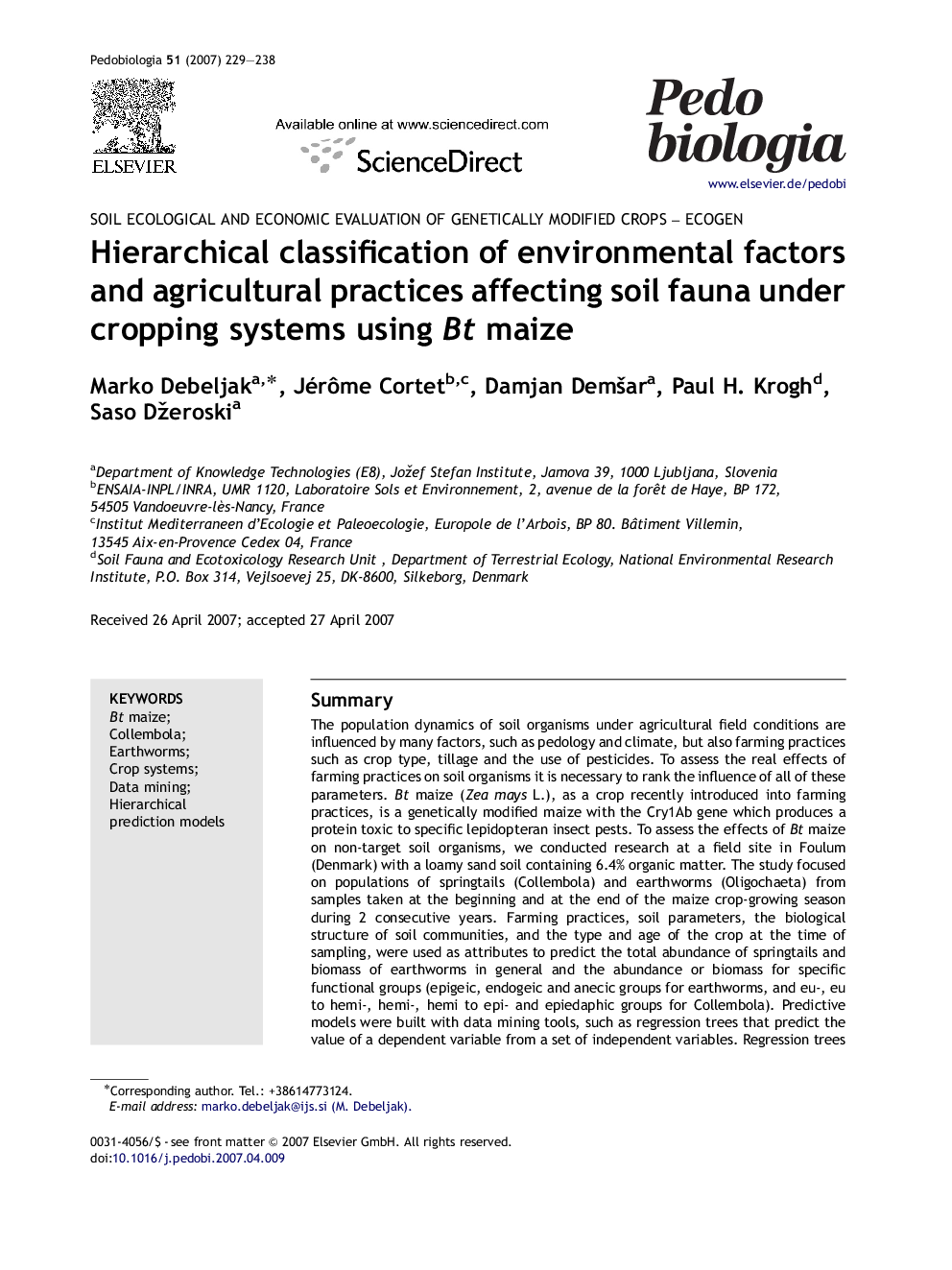| کد مقاله | کد نشریه | سال انتشار | مقاله انگلیسی | نسخه تمام متن |
|---|---|---|---|---|
| 2061546 | 1076499 | 2007 | 10 صفحه PDF | دانلود رایگان |

SummaryThe population dynamics of soil organisms under agricultural field conditions are influenced by many factors, such as pedology and climate, but also farming practices such as crop type, tillage and the use of pesticides. To assess the real effects of farming practices on soil organisms it is necessary to rank the influence of all of these parameters. Bt maize (Zea mays L.), as a crop recently introduced into farming practices, is a genetically modified maize with the Cry1Ab gene which produces a protein toxic to specific lepidopteran insect pests. To assess the effects of Bt maize on non-target soil organisms, we conducted research at a field site in Foulum (Denmark) with a loamy sand soil containing 6.4% organic matter. The study focused on populations of springtails (Collembola) and earthworms (Oligochaeta) from samples taken at the beginning and at the end of the maize crop-growing season during 2 consecutive years. Farming practices, soil parameters, the biological structure of soil communities, and the type and age of the crop at the time of sampling, were used as attributes to predict the total abundance of springtails and biomass of earthworms in general and the abundance or biomass for specific functional groups (epigeic, endogeic and anecic groups for earthworms, and eu-, eu to hemi-, hemi-, hemi to epi- and epiedaphic groups for Collembola). Predictive models were built with data mining tools, such as regression trees that predict the value of a dependent variable from a set of independent variables. Regression trees were constructed with the data mining system M5′. The models were evaluated by qualitative and quantitative measures of performance and two models were selected for further interpretation: anecic worms and hemi-epiedaphic Collembola. The anecic worms (r2=0.83) showed preferences for less clay and more silt soil with medium pH but were not influenced directly by farming practices. The biomass of earthworms was greater in early autumn than in spring or late autumn. Biomass of hemi-epiedaphic Collembola (r2=0.59) increased at the end of the maize growing season, while higher organic matter content and pH tended to increase their biomass in spring. Greater abundance of Collembola was also noted in early autumn if the crop was non-Bt maize. The models assessed by this research did not find any effects of the Bt maize cropping system on functional groups of soil fauna.
Journal: Pedobiologia - Volume 51, Issue 3, 15 August 2007, Pages 229–238